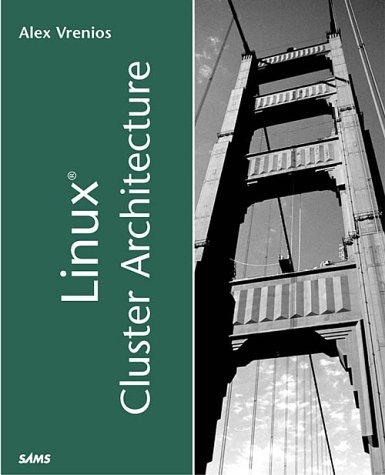
Linux Cluster Architecture
Seiten
2002
Sams Publishing (Verlag)
978-0-672-32368-3 (ISBN)
Sams Publishing (Verlag)
978-0-672-32368-3 (ISBN)
- Titel ist leider vergriffen;
keine Neuauflage - Artikel merken
Cluster computers provide a low-cost alternative to multiprocessor systems for many applications. Linux Cluster Architecture leads you through the design and assembly of such a system, and shows you how to measure and tune its overall performance.
Cluster computers provide a low-cost alternative to multiprocessor systems for many applications. Building a cluster computer is within the reach of any computer user with solid C programming skills and a knowledge of operating systems, hardware, and networking. This book leads you through the design and assembly of such a system, and shows you how to mearsure and tune its overall performance.
A cluster computer is a multicomputer, a network of node computers running distributed software that makes them work together as a team. Distributed software turns a collection of networked computers into a distributed system. It presents the user with a single-system image and gives the system its personality. Software can turn a network of computers into a transaction processor, a supercomputer, or even a novel design of your own.
Some of the techniques used in this book's distributed algorithms might be new to many readers, so several of the chapters are dedicated to such topics. You will learn about the hardware needed to network several PCs, the operating system files that need to be changed to support that network, and the multitasking and the interprocess communications skills needed to put the network to good use.
Finally, there is a simple distributed transaction processing application in the book. Readers can experiment with it, customize it, or use it as a basis for something completely different.
Cluster computers provide a low-cost alternative to multiprocessor systems for many applications. Building a cluster computer is within the reach of any computer user with solid C programming skills and a knowledge of operating systems, hardware, and networking. This book leads you through the design and assembly of such a system, and shows you how to mearsure and tune its overall performance.
A cluster computer is a multicomputer, a network of node computers running distributed software that makes them work together as a team. Distributed software turns a collection of networked computers into a distributed system. It presents the user with a single-system image and gives the system its personality. Software can turn a network of computers into a transaction processor, a supercomputer, or even a novel design of your own.
Some of the techniques used in this book's distributed algorithms might be new to many readers, so several of the chapters are dedicated to such topics. You will learn about the hardware needed to network several PCs, the operating system files that need to be changed to support that network, and the multitasking and the interprocess communications skills needed to put the network to good use.
Finally, there is a simple distributed transaction processing application in the book. Readers can experiment with it, customize it, or use it as a basis for something completely different.
Alex Vrenios is the founder and principal analyst at the Distributed Systems Research Lab, a technical consulting group specializing in the performance measurement and analysis of distributed computing architectures. He holds a BS and MS in Computer Science, is the author of numerous articles, and is a member of both the ACM and the IEEE. He started his computing career more than 30 years ago, working with communications and data transmission software on mainframe computers. He made the transition to a networked C/UNIX environment, learned about interprocess communications distributed algorithms and cluster computing, and never looked back.
| Erscheint lt. Verlag | 27.6.2002 |
|---|---|
| Verlagsort | Indianapolis |
| Sprache | englisch |
| Maße | 232 x 187 mm |
| Gewicht | 440 g |
| Themenwelt | Informatik ► Betriebssysteme / Server ► Unix / Linux |
| Mathematik / Informatik ► Informatik ► Software Entwicklung | |
| Mathematik / Informatik ► Informatik ► Theorie / Studium | |
| ISBN-10 | 0-672-32368-0 / 0672323680 |
| ISBN-13 | 978-0-672-32368-3 / 9780672323683 |
| Zustand | Neuware |
| Haben Sie eine Frage zum Produkt? |
Mehr entdecken
aus dem Bereich
aus dem Bereich


